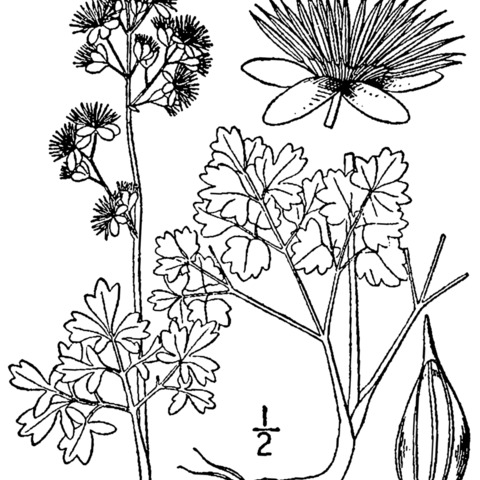Stems glabrous or nearly so, arising 3–10+ dm from the upturned end of a rhizome; lvs usually at least sparsely glandular beneath, but less so than in no. 8 [Thalictrum revolutum DC.], those below the infl petioled, those subtending the panicle-branches sessile; panicle with ascending branches; body of the achene 4–6 mm, its lower margin more convex than the upper; 2n=42. Rocky or gravelly soil, often along shores; Lab. to B.C., s. to Vt., n. N.Y., n. Mich., n. Wis., n. Minn., Wyo., and Oreg. June, July. Our plants have been distinguished on dubious grounds from typical cordilleran T. venulosum as var. confine (Fernald) B. Boivin. (T. confine)
Stems glabrous or nearly so, arising 3–10+ dm from the upturned end of a rhizome; lvs usually at least sparsely glandular beneath, but less so than in no. 8 [Thalictrum revolutum DC.], those below the infl petioled, those subtending the panicle-branches sessile; panicle with ascending branches; body of the achene 4–6 mm, its lower margin more convex than the upper; 2n=42. Rocky or gravelly soil, often along shores; Lab. to B.C., s. to Vt., n. N.Y., n. Mich., n. Wis., n. Minn., Wyo., and Oreg. June, July. Our plants have been distinguished on dubious grounds from typical cordilleran T. venulosum as var. confine (Fernald) B. Boivin. (T. confine)

